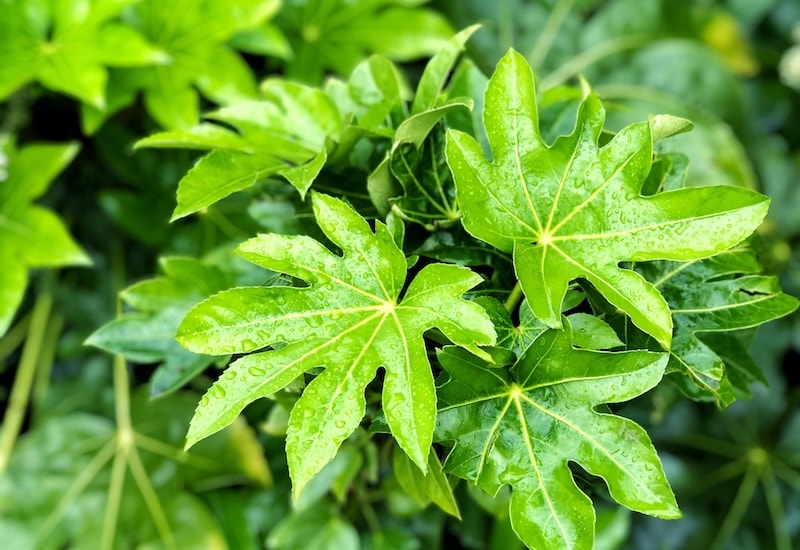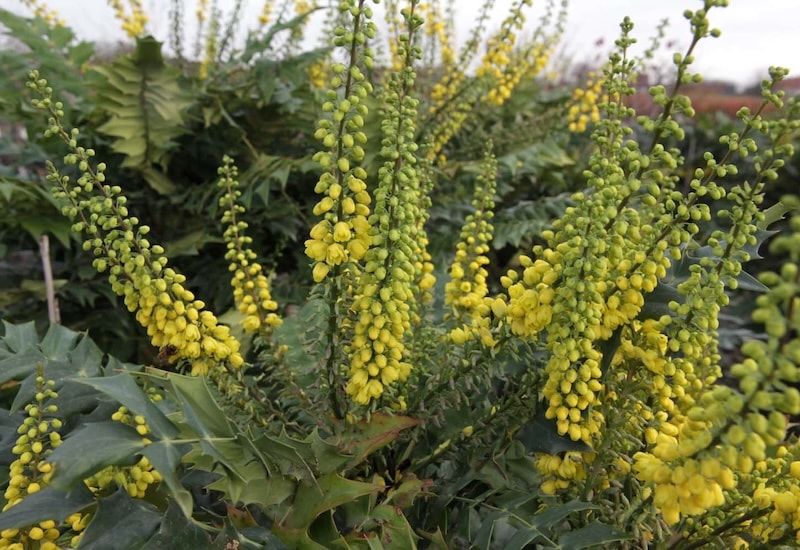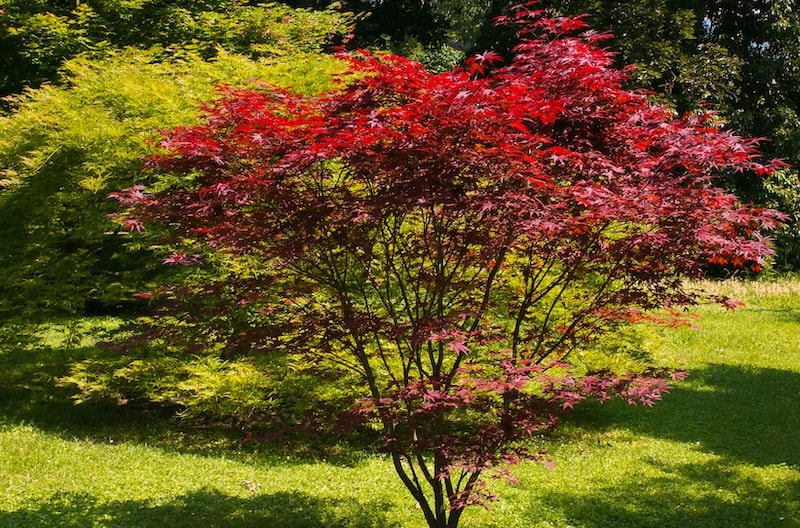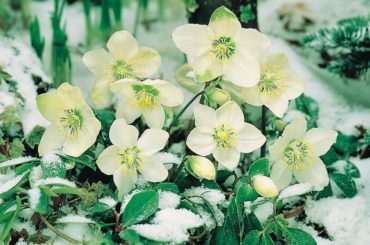Architectural shrubs bring structure and form to your garden with their striking leaves, interesting textures, unusual branches or imposing height. Whether you want to beef up summer borders or maintain a sense of structure through the winter months, there are plenty of shrubs to choose from. Here are some of the best articles, videos and Instagram posts to help you add architectural wow-factor to containers, beds and borders.
Browse our full range of architectural shrubs for inspiration.
Contents:
- Best advice on evergreen shrubs for all year round structure
- Best advice on architectural shrubs for summer
- Best advice on architectural shrubs for winter
Best advice on evergreen shrubs for all year round structure

Image: Fatsia japonica from Suttons
November is a good time to assess your garden’s structure and spot any gaps or opportunities, says Katie Townsend at @katietownsendgardendesign. And, she adds, “it’s also the time to get planting… [so you can] start seeing the benefit of your hard work.” Read Katie’s full post for advice on the “clipped shapes, interesting bark and stems, architectural evergreens, billowing grasses and even seed heads” that will give your garden an architectural edge all year round.
Hedging and topiary specialist Will Cronin from @excelsisgardens helps his clients maintain all year round structural interest with a variety of carefully clipped evergreens. Whether it’s a regimentally straight hedge or intricately rounded topiary shapes, these immaculately tended evergreens create a formal framework that remains unchanged throughout the seasons. Want to update your patio? Check out these beautiful buxus balls for inspiration.
To successfully give your garden all year round structure, Craig from Grow Paradise recommends planting hardy architectural evergreens like fatsia and pseudopanax. But he warns against pushing them all to the backs and sides of your garden. Instead, he suggests spreading them evenly throughout the entire space so they really stand out as other plants die back.
For all year round architectural interest, you can’t beat the “huge, glossy, deep green” palmate leaves of a fatsia japonica, enthuses the busy mum of four behind the @cornishgardener_ Instagram page. She says that this tropical-looking evergreen shrub offers more than just fantastic foliage. The “beautiful creamy white pom pom looking flowers” that appear from October are another reason to find a place for it.
Best advice on architectural shrubs for summer

Image: Miscanthus sinensis ‘Zebrinus’ from Suttons
Big, bold clumps of lush grasses add interesting height and movement to summer planting schemes, and Peter uses them to perfection in his gorgeous garden at @lowerhousegardenhay. If you’re looking for something that makes a real summer statement, check out this photo of Miscanthus ‘Zebrinus’. The long thin green leaves feature bright yellow stripes, before turning a biscuity brown in winter.
Over at The Distinctive Gardener, Nick and Doug share an excellent video tour that demonstrates how architectural plants like bamboo, ornamental rhubarbs and acers can be used to striking effect. Brimming with wow-factor by day, visit their Insta page to see the same garden by night. Cleverly uplighting the architectural leaves of a blood red acer creates a magical atmosphere.
For structure and interest on a smaller scale, Marie from Plews Garden Design recommends sowing teasel seeds. These attractive bi-ennials lend a striking architectural quality to your garden and “the skeleton of the seed heads often last right through to the following spring,” says Marie. Needing little water once established, read her full article for more low-maintenance suggestions for architectural plants.
Best advice on architectural shrubs for winter

Image: Mahonia x media ‘Winter Sun’ from Suttons
“Just because the season is changing, that doesn’t mean that your garden needs to look drab and uninspiring,” says Colin Boggon from @botanicalondon. By choosing evergreen plants like Taxus baccata or ornamental grasses that “will hold their form well into winter,” you can retain structural wow-factor even as the temperature drops. Check out the inspirational image on his Insta to see how he does it!
An architectural plant that makes a real statement in a winter garden is Mahonia ‘Winter Sun’. Richard Wilford, an experienced gardener at Kew Gardens, shares a wonderful image of a mahonia in full bloom over at his Instagram page – @richardwilf. Follow Richard for top garden border tips and winning plant combinations.
Architectural plants are often chosen for their striking foliage, but don’t forget about colourful stems for wonderful winter structure, says Janet of Janet Bligh Garden Designs. She suggests growing cornus (dogwoods) for “a stunningly vivid display of dark red, orange, limey green or dark bronze-black” stems through the coldest months. Her top tip? “Go for a group planting of 3 or more and they will look truly spectacular in an open spot where they will literally light up when the winter sun hits them.” Read her full article for more ideas.
We hope we’ve given you plenty of food for thought and that our collection of architectural shrub content proves helpful. Looking for ways to add all year-round interest to your outside space? Read our expert advice on evergreens or browse our shrub collection for more ideas and inspiration.
Lead Image: Acer palmatum ‘Emerald Lace’ from Suttons
Last Updated on September 5, 2024 by Suttons Horticultural Team






I need to be able to grow PITTOSPORUM TENUIFOLIUM KOHUHU from seed in small pots.
Can you help please ?
i have recieve my two acers today fast delivery great packing and great conditions but not intructions on what to do with it i have got it in my unheated green house at the moement as we are expecting bitter weather and snow, but i dint know if i should pot them on or what , i lost my big acer last year from the from the frost x